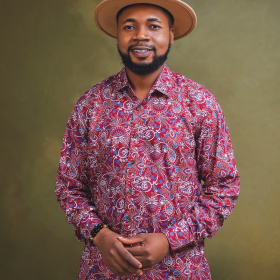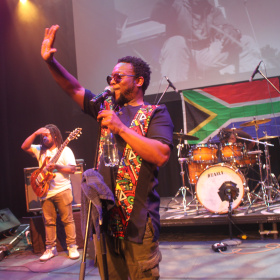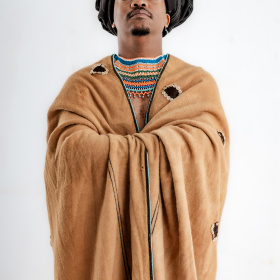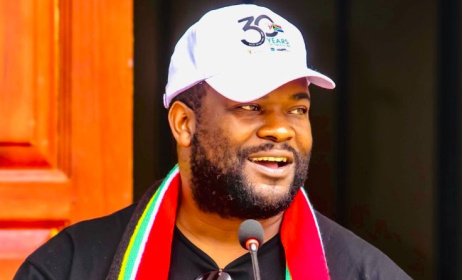Highlife Music Deconstructed: Exploring Ghana’s iconic sound
If Ghana has any chance of cultivating a vibrant live music scene, then music education that’s aimed at young people and a robust infrastructure that supports live musicians must be at the heart of that change.
 Kyekyeku.
Kyekyeku.
The above conclusion is among other deductions that leading Ghanaian contemporary live musicians made during an episode with the hosts of live music programme Highlife Music Deconstructed (HMD) on 20 February. The presenters included Bernard Johnson-Tackie, a DJ and vinyl record collector, and magazine editor Abena Serwaa.
The HMD series is an initiative that seeks to promote and preserve live music in Ghana and beyond. Since September 2020, the hosts have covered almost a century of Ghana’s highlife history in five episodes. Each segment is produced by Johnson-Tackie with Patrick Ofosu of Epytion leading the technical production.
Highlife is a genre that originated in present-day Ghana early in the 20th century. It borrows from the melodic and main rhythmic structures of traditional Akan music, but is played with Western instruments. The genre is characterised by jazzy horns and multiple guitars that lead the band. More recently, it has picked up an up-tempo, synth-driven sound.
The series has discussed topics such as Ghana’s traditional folkloric sounds, the influence of palmwine music, the impact of American big band jazz on Ghana’s highlife dance bands, the explosion of Afro-funk/Afro-soul and Afrobeat, and the evolution of borga highlife.
Episode 5 tied together all the topics with a brief look at hiplife music and today’s Afrobeats scene. The episode concluded with a series of exclusive interviews and performances from multi-instrumentalist and producer Kwame Yeboah, Nyornuwofia Agorsor of Agorsor Band, Nee Mantse and BiQo of Lala Sessions and Super Opong Stars frontman and guitarist Kyekyeku.
According to Kyekyeku, the popularity for live musical performances has been displaced by the rise in digitally made music, which he believes has stifled organic creativity.
“There is a way of consuming live music that means that you are not hearing all of the finesse that you would find if it had been recorded in the studio,” Kyekyeku, who was classically trained by Agya Koo Nimo, said. “That means the music is raw and organic but it is also beautiful. But people have lost touch on how to consume things fresh.”
The guitarist’s words come as little surprise when you consider that music education is no longer a staple in the Ghanaian curriculum. “In 1998, I was the last lot of students to learn music education in the Ghanaian curriculum, before it was removed,” he added.
Infrastructure challenges remain a huge obstacle and one of the reasons why Ghana’s live music scene is more appreciated abroad. Kwame believes the future vibrancy of the live performances depends on the ability to make more public spaces and recording studios available for musicians to create music.
“We need more bands,” Kwame said. “That’s the only time we can truly start talking about music and the genre. In the ‘70s and ‘80s, those bands had their own unique sound. When you heard Alhaji K Frimpong and Vis a Vis, everyone sounded different. And if we have that, we can create the market.”
Bernard said: “Highlife music acts as the audio soundtrack to Ghana’s history before independence right through to the influence of black consciousness and the fight for independence. The power of the music still reverberates in popular musical styles such as Afrobeats, proving that the genre is far from dead. We hope through this whistle-stop tour of the sound, viewers will build on their musical knowledge and celebrate the resilience and adaptability of the music.”
About the Highlife Music Deconstructed series
HMD is a collaboration between Bernard Johnson-Tackie of the GoldenStool Project, Abena Serwaa of AKADi Magazine and Patrick Ofosu of Epytion.
The first episode was screened in September 2020 and covered the first generation of highlife from the 1920s to the mid-1950s. It charted the emergence of palmwine and early highlife groups. The main players included Jacob Sam (Kwame Asare) and Kumasi trio Kwaa Mensah, identifying the various indigenous and foreign influences that have shaped the unique sound.
Episode 2 aired in October and ushered viewers into the post-independence era of big dance bands modelled on American jazz big bands. It featured a discussion on big names of their time, including The Ramblers, ET Mensah, Broadway Dance Band, and Jerry Hansen Black Beats.
Episodes 3 and 4 aired over November and December and looked at highlife greats including Ebo Taylor, Pat Thomas and K Frimpong during the 1970s. The mid-1980s saw the emergence of the disco-infused borga highlife with musicians like George Darko, Lee Doudou and Daddy Lumba being the key proponents. The series also analysed the impact those eras have had on today’s highlife bands such as Santrofi.
Watch the series here.
For more information, contact akadimagazine@gmail.com or we@thegoldenstoolproject.org.


































Comments
Log in or register to post comments